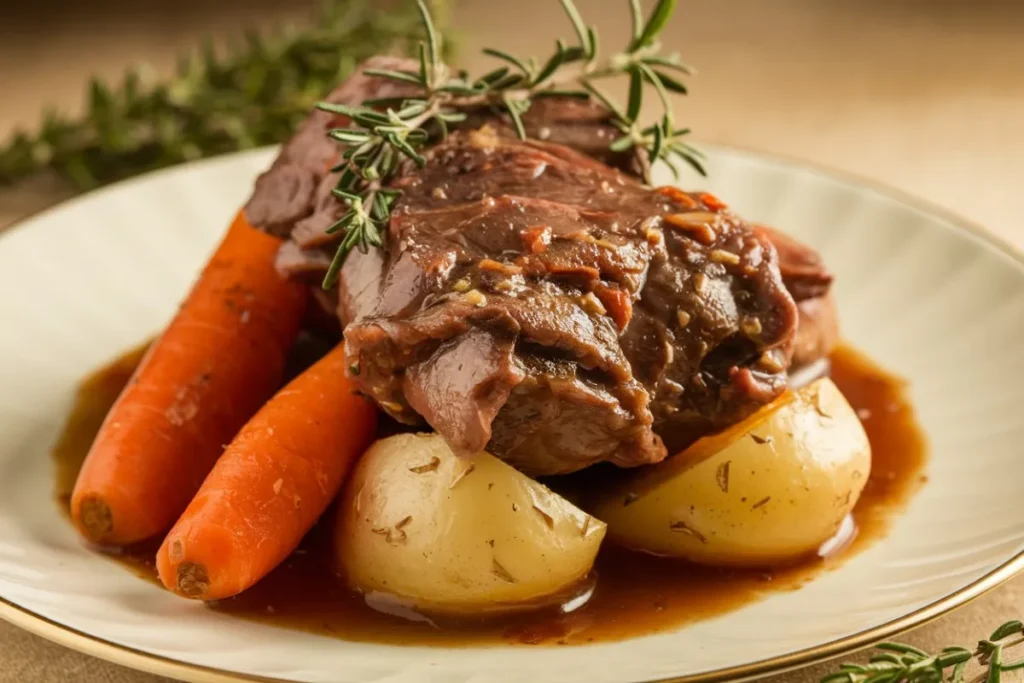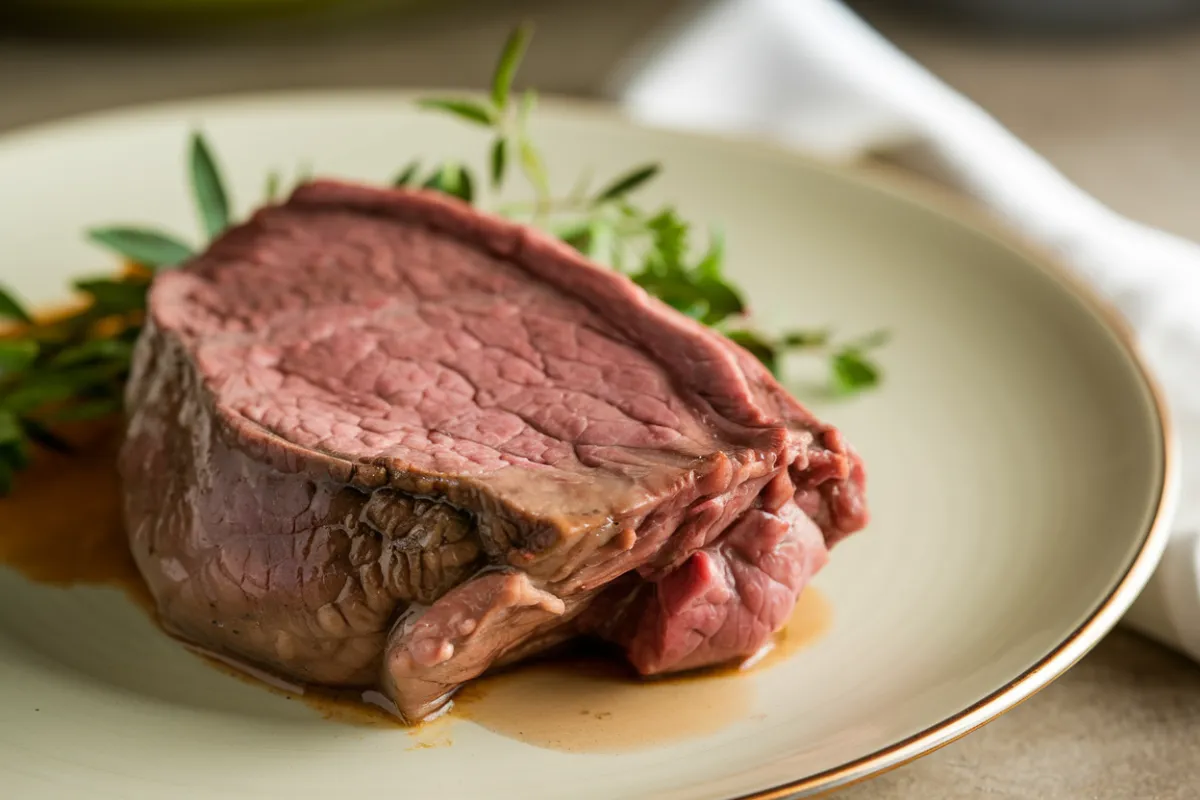Introduction to Beef Cheeks
Beef cheeks, a delicacy often overshadowed by more common cuts, have been gaining popularity in culinary circles for their rich flavor and tender texture. These tender morsels of meat, sourced from the facial muscles of cattle, are known for their unique ability to absorb flavors and transform into succulent, melt-in-your-mouth dishes when cooked properly.
Historically, beef cheeks were considered a less desirable cut, often reserved for slow cooking in hearty stews. However, modern chefs and home cooks alike have embraced this cut for its versatility and depth of flavor, making it a staple in both rustic and gourmet cuisine.
Understanding the Cut: What Are Beef Cheeks?
Anatomical Location and Characteristics
Beef cheeks are located in the facial region of the cow, specifically in the cheek muscles. These muscles are used extensively by the cow during its life, resulting in a cut that is both lean and full of connective tissue. This high level of connective tissue is what gives beef cheeks their signature rich, gelatinous texture when slow-cooked.
- Texture: Firm when raw, but becomes tender and gelatinous after long, slow cooking.
- Flavor: Rich, beefy, and slightly gamey, with a depth of flavor that is hard to match.
Comparison with Other Beef Cuts
When comparing beef cheeks to other cuts like brisket or short ribs, the differences become apparent:
- Brisket: Another cut known for its richness and ideal for slow cooking, but typically has more fat.
- Short Ribs: Similar in flavor but with more bone content, making them less meaty than beef cheeks.
- Chuck: Often used in stews, but with a slightly different texture and flavor profile.
Understanding these differences helps in selecting the right cut for specific recipes and desired outcomes.
How Beef Cheeks Are Processed
The Butchering Process
The butchering process for beef cheeks involves careful trimming to remove excess fat and connective tissue. Butchers typically separate the cheeks from the facial bones, leaving behind a dense, lean muscle that is ready for cooking.
Selling and Preparation
Beef cheeks are often sold either fresh or frozen. When purchasing, it’s essential to look for well-trimmed cheeks with minimal fat. Some butchers may also sell them pre-marinated or seasoned, ready for cooking.
Popular Cooking Methods for Beef Cheeks

Braising and Slow Cooking
Braising is the most common method used to cook beef cheeks, allowing the tough connective tissue to break down and the meat to become tender and flavorful. The process involves:
- Searing the cheeks to develop a rich, brown crust.
- Simmering in a flavorful liquid (such as broth, wine, or a combination) over low heat for several hours.
The result is a dish that is not only tender but also infused with deep, rich flavors.
Sous Vide Techniques
Sous vide cooking has become increasingly popular for beef cheeks, as it allows for precise temperature control, ensuring the meat reaches the perfect level of tenderness without overcooking. The process typically involves:
- Seasoning the beef cheeks with herbs and spices.
- Vacuum sealing the cheeks in a bag.
- Cooking them in a water bath at a low temperature for an extended period (usually 24-48 hours).
This method results in incredibly tender meat that retains all its natural juices and flavors.
Stewing and Pot Roasting
Beef cheeks are also ideal for stewing and pot roasting. These methods involve cooking the meat slowly in a liquid, allowing the flavors to meld together. Popular dishes include:
- Beef cheeks stew: A hearty dish with vegetables and a thick, savory sauce.
- Pot-roasted beef cheeks: Often served with root vegetables and a rich gravy.
Smoked Beef Cheeks
For those who enjoy a smoky flavor, smoking beef cheeks is an excellent option. The process involves:
- Seasoning the beef cheeks with a dry rub.
- Smoking them at a low temperature until they reach the desired tenderness.
This method imparts a deep, smoky flavor that complements the natural richness of the meat.
Nutritional Profile and Health Benefits
Nutrient Composition
Beef cheeks are not only flavorful but also packed with essential nutrients. They are particularly high in:
- Protein: Essential for muscle repair and growth.
- Collagen: Supports skin, hair, and joint health.
- Iron: Important for oxygen transport in the blood.
- Vitamin B12: Vital for nerve function and red blood cell formation.
Health Benefits
The high collagen content in beef cheeks makes them particularly beneficial for skin and joint health. Collagen helps maintain skin elasticity and supports the repair of joint tissues. Additionally, the iron and protein content contribute to overall health and well-being.
Comparing beef cheeks to other beef cuts, they tend to be leaner, making them a healthier option for those looking to reduce fat intake without sacrificing flavor.
Flavor Pairings and Serving Suggestions
Spices, Herbs, and Marinades
The rich flavor of beef cheeks pairs well with a variety of spices and herbs. Common pairings include:
- Thyme and rosemary: For a classic, earthy flavor.
- Garlic and onion: To add depth and sweetness.
- Red wine marinades: To enhance the natural beefy flavor.
Common Side Dishes and Accompaniments
When serving beef cheeks, consider pairing them with sides that complement their richness. Popular choices include:
- Mashed potatoes: A creamy and comforting side.
- Roasted root vegetables: Adds sweetness and balance.
- Polenta: A classic Italian pairing.
Wine and Beverage Pairings
For beverages, full-bodied red wines such as Cabernet Sauvignon or Syrah are excellent choices. Their bold flavors complement the richness of the beef cheeks. For non-alcoholic options, consider:
- Herbal teas: Such as chamomile or mint.
- Sparkling water: To cleanse the palate.
Where to Buy What cut of meat is beef cheeks
Local Butcher Shops vs. Supermarkets
Beef cheeks can be found at both local butcher shops and supermarkets. However, the quality and freshness may vary:
- Local Butcher Shops: Often provide fresher cuts and may offer advice on preparation.
- Supermarkets: Convenient but may have pre-packaged options that lack freshness.
Online Purchasing Options
For those who prefer online shopping, several specialty meat suppliers offer beef cheeks for delivery. When purchasing online, look for suppliers with high ratings and customer reviews to ensure quality.
Proper Storage and Handling of Beef Cheeks
Storing Fresh and Frozen Beef Cheeks
To maintain the quality of beef cheeks, proper storage is essential:
- Fresh Beef Cheeks: Store in the refrigerator and use within 2-3 days.
- Frozen Beef Cheeks: Can be stored in the freezer for up to 6 months. Ensure they are tightly wrapped to prevent freezer burn.
Thawing and Preparation Tips
When thawing frozen beef cheeks, it’s best to do so slowly in the refrigerator to maintain texture and flavor. Avoid using a microwave as it can unevenly thaw the meat and affect its quality.
Top Recipes Featuring What cut of meat is beef cheeks
Classic Braised Beef Cheeks
This recipe highlights the traditional method of braising, resulting in tender and flavorful meat.
- Ingredients:
- 4 beef cheeks
- 2 cups red wine
- 1 onion, chopped
- 3 cloves garlic, minced
- 2 cups beef broth
- 2 sprigs thyme
- Instructions:
- Sear the beef cheeks in a hot pan.
- Add onion and garlic, cook until softened.
- Pour in the red wine, simmer until reduced by half.
- Add beef broth and thyme, cover, and braise in the oven at 300°F for 3 hours.
Beef Cheeks Tacos
A modern twist on traditional tacos, using beef cheeks as the star ingredient.
- Ingredients:
- 2 beef cheeks
- 1 onion, sliced
- 1 tsp cumin
- Corn tortillas
- Fresh cilantro and lime for garnish
- Instructions:
- Cook the beef cheeks with onion and cumin until tender.
- Shred the meat and serve in warm tortillas.
- Garnish with cilantro and a squeeze of lime.
Asian-Inspired What cut of meat is beef cheeks
This recipe incorporates Asian flavors, making it a unique and delicious dish.
- Ingredients:
- 4 beef cheeks
- 2 tbsp soy sauce
- 1 tbsp ginger, minced
- 2 cloves garlic, minced
- 1 cup beef broth
- 1 tbsp sesame oil
- Instructions:
- Sear the beef cheeks and set aside.
- Sauté ginger and garlic, then add soy sauce and beef broth.
- Return beef cheeks to the pan, cover, and simmer until tender.
Beef Cheeks in Red Wine Sauce
A rich and elegant dish perfect for special occasions.
- Ingredients:
- 4 beef cheeks
- 2 cups red wine
- 1 cup beef broth
- 1 carrot, chopped
- 1 onion, chopped
- Instructions:
- Sear beef cheeks, then set aside.
- Sauté carrot and onion, then deglaze the pan with red wine.
- Add beef broth and beef cheeks, simmer until tender.
Quick and Easy Beef Cheeks Recipes
For those short on time, these recipes offer delicious results with minimal effort:
- Beef Cheeks Stir-Fry: Cook thinly sliced beef cheeks with vegetables and soy sauce.
- Beef Cheeks Salad: Serve sliced beef cheeks over mixed greens with a balsamic vinaigrette.
- Beef Cheeks Sandwich: Use leftover braised beef cheeks in a sandwich with arugula and horseradish mayo.
FAQs: Common Questions About Beef Cheeks
Are Beef Cheeks Tough?
When cooked properly, beef cheeks are incredibly tender. The key is to cook them slowly over low heat, which allows the connective tissue to break down, resulting in a melt-in-your-mouth texture.
How Long Do You Cook What cut of meat is beef cheeks ?
Beef cheeks typically require 3-4 hours of slow cooking to reach the desired tenderness. When using methods like sous vide, cooking times can extend up to 48 hours for optimal results.
Can Beef Cheeks Be Grilled?
While beef cheeks are best suited for slow cooking, they can be grilled if pre-cooked. First, braise or sous vide the beef cheeks until tender, then finish on the grill for a smoky flavor.
Are Beef Cheeks Expensive?
Beef cheeks are generally more affordable than premium cuts like filet mignon or ribeye. However, their price can vary depending on the region and demand.
How Do You Tenderize Beef Cheeks?
The best way to tenderize beef cheeks is through slow cooking methods like braising or sous vide. These techniques allow the tough connective tissue to break down gradually.
Conclusion: The Versatility of What cut of meat is beef cheeks
In conclusion, beef cheeks are a versatile and flavorful cut of meat that can be prepared in various ways. Whether you’re braising them for a classic dish or experimenting with new flavors, beef cheeks offer a unique culinary experience. Their rich flavor, coupled with their affordability, makes them an excellent choice for both everyday meals and special occasions. If you haven’t tried cooking beef cheeks yet, now is the perfect time to explore this delicious cut.

